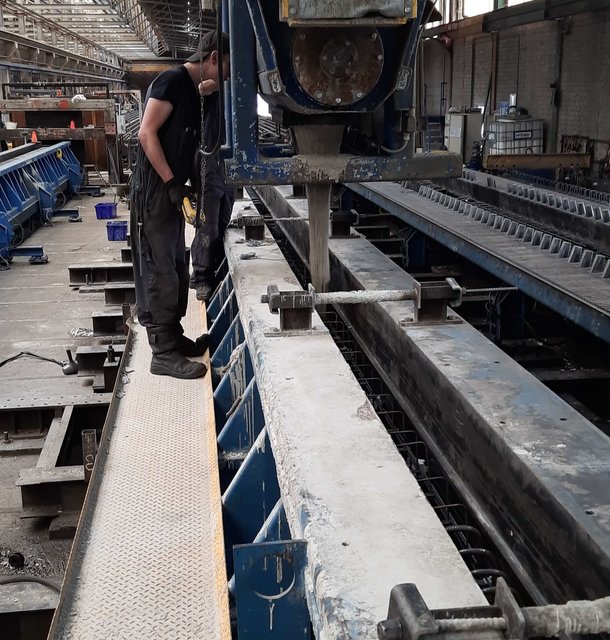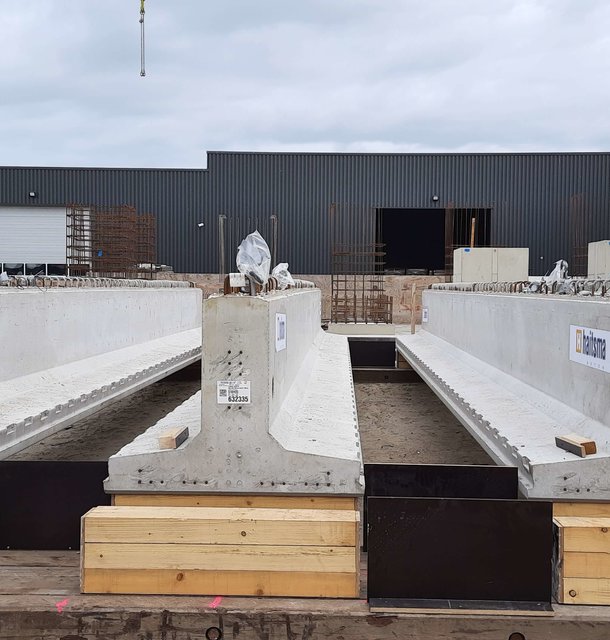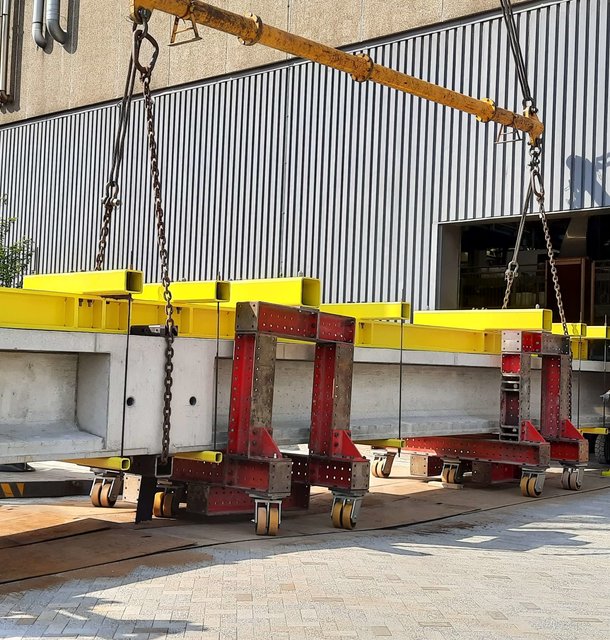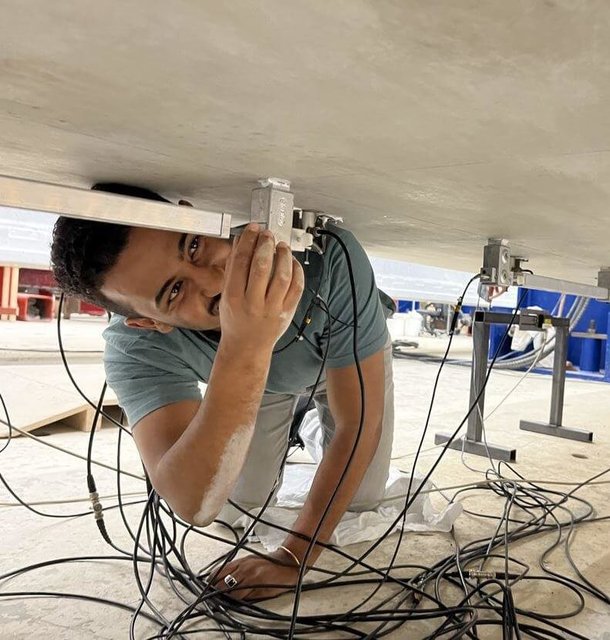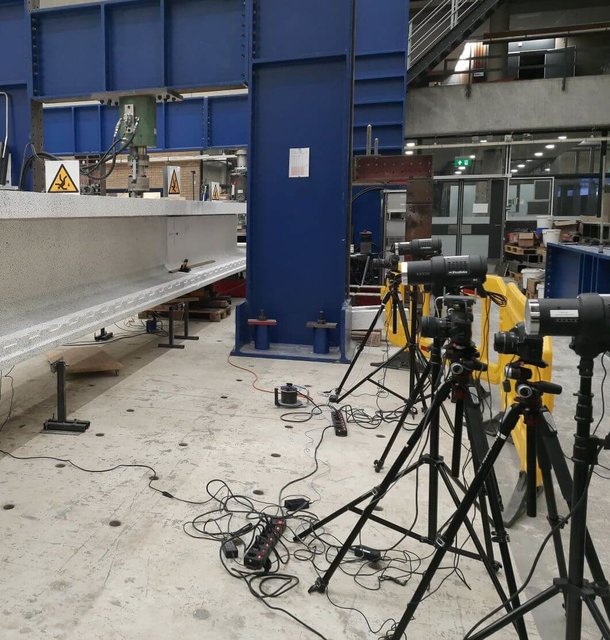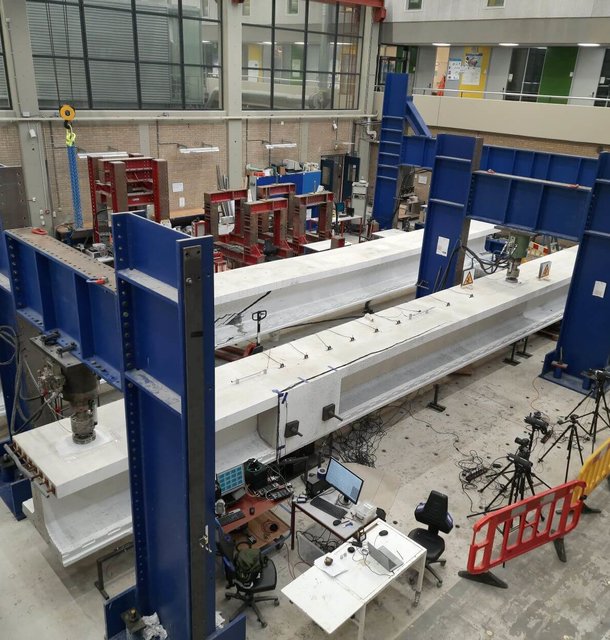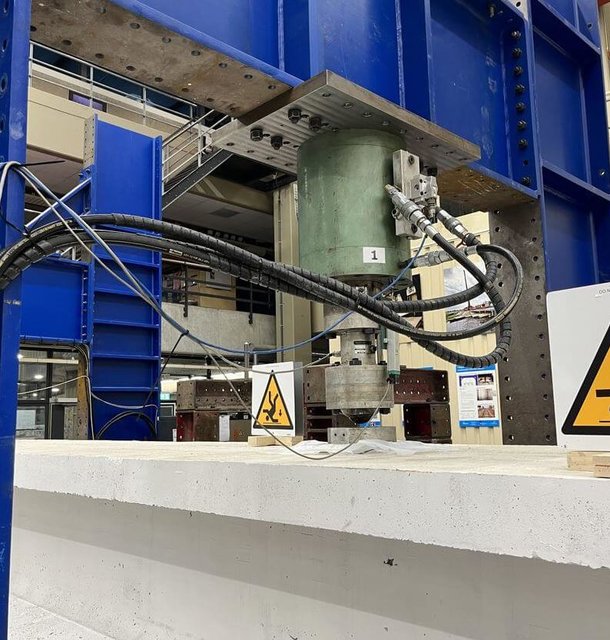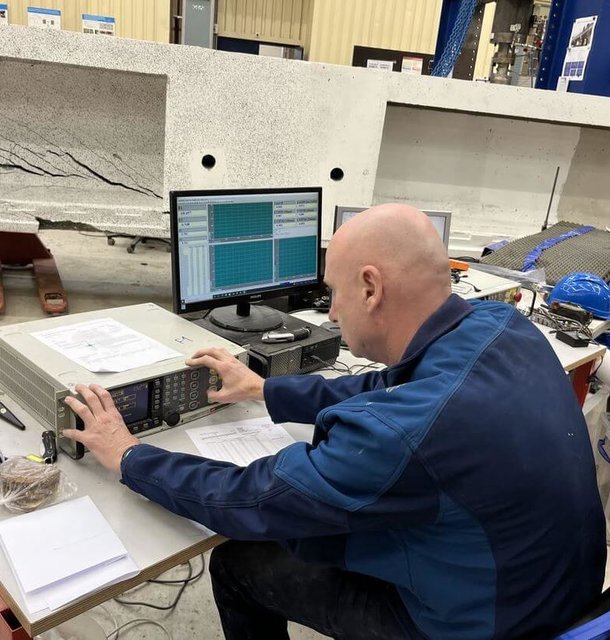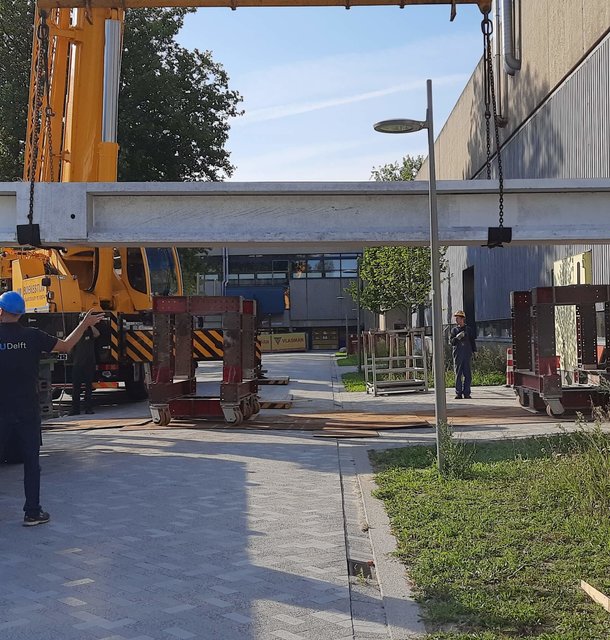Dutch bridges are stronger than assumed
Most concrete bridges on our highways have been there for more than sixty years. They tirelessly carry heavily loaded trucks. How long can we still rely on these bridges? Yuguang Yang and his colleagues made precise replicas of existing bridge parts. Last week in the lab at TU Delft, they loaded one of the replicas till collapsing: how many trucks can the bridge ultimately carry? The first impression from the tests turned out to be positive; the experiments suggest that the bridges may be stronger than initially thought. Some of bridges can hopefully last a while and do not need to be strengthened or replaced yet.
Short span bridges are the majority on our road network and are mostly built since the sixties by beams manufactured in factories in the Netherlands. They must be able to hold more weight nowadays than they were designed for in the past because the traffic is significantly increased. To prevent a disaster like the collapsing bridge in Genova in 2018, the Dutch Ministry of Infrastructure and Water Management (Rijkswaterstaat) keeps a close eye on their safety.
To know for how long bridges are still safe, there are predictive models in the standards that allow engineers to calculate how much load the beams can handle. According to these models, a considerable percentage of bridges made of prefabricated beams cannot provide sufficient bearing capacity now. But the models from standards are generic with many simplifications and therefore often conservative. They are not accurate enough to describe the specific conditions of the more than two thousand bridges, all built with a similar beam type and construction method that is unique in the Netherlands. The reference experiments or other type of research outside of the Netherlands are not representative enough for Rijkswaterstaat to evaluate the bridges.
Full-scale replicas
Some years ago, Yuguang Yang, assistant professor and project leader, together with Mauro Poliotti, Niels Kostense and Mohammed Sirage Ibrahim, started designing one-on-one replicas of the bridge parts, in collaboration with Rijkswaterstaat. The parts are made of beams with a unique shape and construction materials, widely produced since the end of 1960s in the Netherlands. The fifteen-metre-long bridge parts are precise replicas of the parts and connections of the existing bridges. PhD student Ibrahim designed a system to transport the heavyweight beams right across the Netherlands to the Stevin lab at TU Delft, also the same way as was done in the sixties. At the same time, PhD student Kostense created digital twins of the beams that predicts what may happen during the whole loading process in terms of cracking and crushing of concrete and yielding and rupture of the steel reinforcement.
Ibrahim and technician Albert Bosman installed one measuring instrument after another to closely monitor what happens when the load on the concrete structure increases. Slowly, they increase the pressure in the jack till the level that they expect the first cracks to appear following many measurements and analyses. If the structure is still found to be strong enough, they increase the ‘number of trucks’ (load), until the structure fails.
How will the crack occur?
Because of the unique design and uncertainty of material properties, it is difficult to predict how the beam will fail. But that is the reason to challenge engineers over the entire world. What is the state of art development of knowledge in this field? What is the human factor in modelling and predicting? So a contest was declared: properties of the bridge parts are now public and experts are challenged to predict how the cracks will run and the bridge part will fail. Yang and his colleagues have already managed to produce the answer. It is possible to enter the contest until 1 May 2023, after which results will be announced.
Bridges can stay there for a while
Almost half of the 32 replicas in total are now loaded with hydraulic jack until they collapse (explode). The first stage of the project is coming to an end and the first results are positive. "In the most extreme cases, the capacity of the beams is about two times compared to the calculation using the current models", Yang says. And that is good news. Based on the experiments, Yang and his colleagues are busy developing accurate physical based models to demonstrate that some of the bridges have sufficient bearing capacity and do not need to be strengthened or replaced in the near future.
Earlier, Yang's research group conducted tests on a real sixty-year-old bridge beam, that was constructed in a completely different way. The heavy load caused the structure to collapse.
Listening to concrete
Way before the bridge components fail, Yang examines where small cracks are and to what extend the cracks have formed. He has developed a method based on acoustic waves to detect this at a much earlier stage, before one can see it. Read more about this in his Story of Science 'The concrete listener'.

